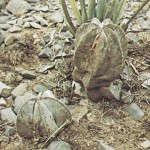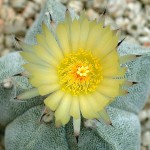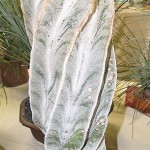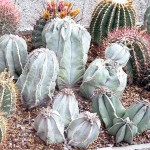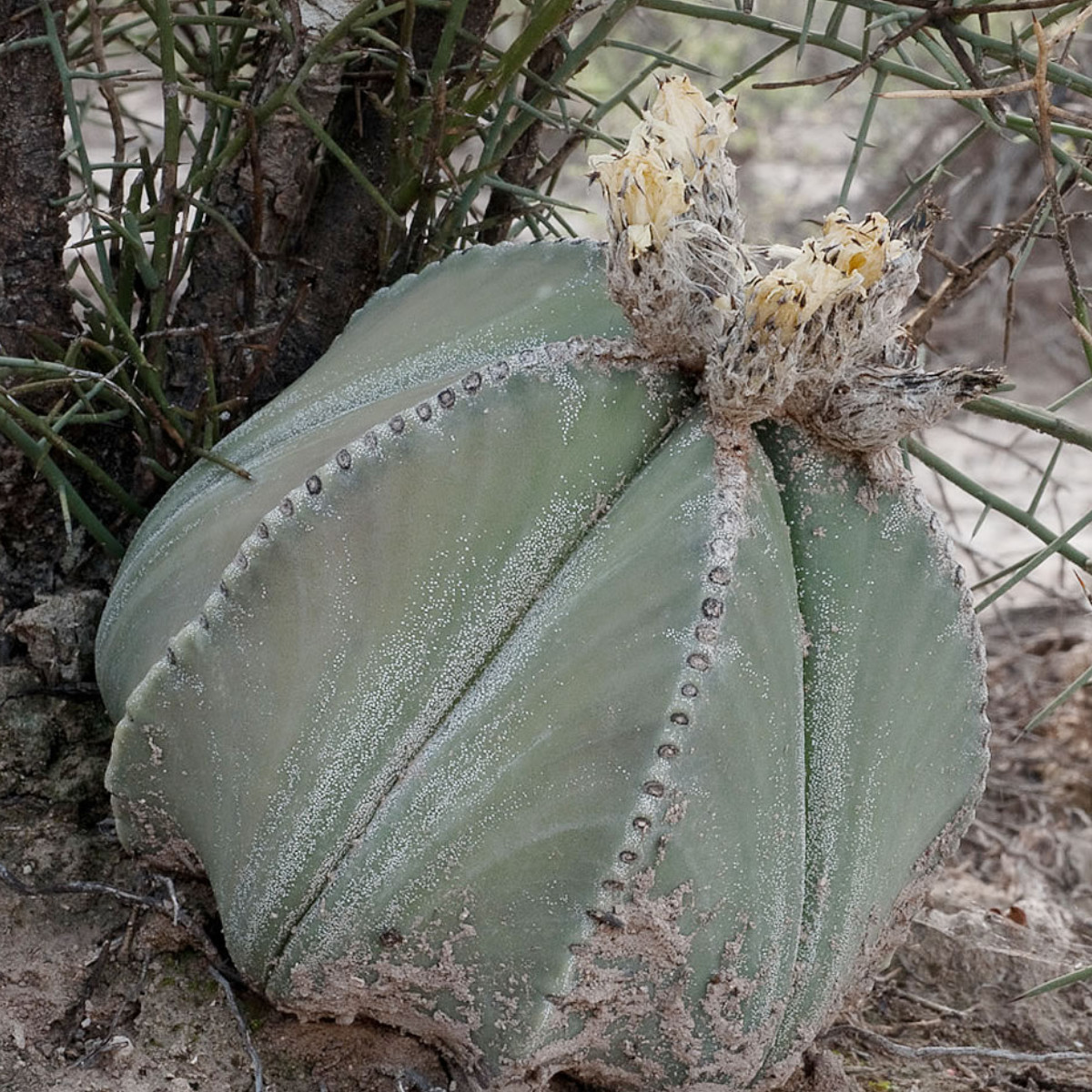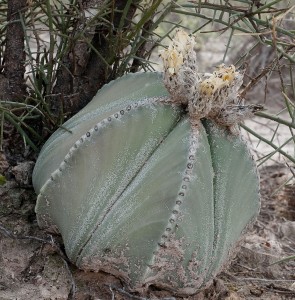Family: Cactaceae
Synonymous: Astrophytum coahuilense
Astrophytum columnare
Astrophytum nuda
Astrophytum prismaticum
Echinocactus myriostigma
Distribution and habitat: Astrophytum myriostigma is a species of cactus native to the highlands of northeastern and central Mexico. They inhabit preferentially sunny south and east slopes on lime formations, rarely grow in north or west position between white grey rock in a loose to thick vegetation, which mainly consists of a dry bush community.
Description: Astrophytum myriostigma are desert cacti, each with an unbranched stem that is roughly globular - ofter becoming elongate as the plant age (after several years becoming cilindrical) - and that is divided into wide three to eight segments, sharped-edges ribs. The basically green stem has no spine but is covered with tiny tufts of silvery hair (appearing like scales or spots). These give the plant a greyish cast. In mature cacti the bottom of the stem trends to become woody. It grows up to about 70-100cm tall and 10-2 cm in diameter.
After a plant is mature, funnel-shaped flowers grow from areoles near the top of the stem; each flower lasts only a few days, but the plant continues to flower throughout the spring and summer. The flowers of all forms are bright yellow and grow about 5cm (2 inch) wide. These cacti may take up to six years to flower.
Houseplant care:
Light: Astrophytum myriostigma need plenty of direct sunlight.
Temperature: Normal room temperatures are suitable during the active growth period. From late autumn to late winter give Astrophytum myriostigma a rest period at 7-10C (45-50F).
Water: During the active growth period water these plants moderately, but allow the top three-quarters of the mixture to dry out thoroughly between waterings. During the rest period give only enough water to prevent the mixture from drying out.
Feeding: A long-term, slow-release fertiliser should be added to the potting mixture for Astrophytum myriostigma. When they are being repotted there is no need to add any extra fertiliser if this procedure is followed.
Potting and repotting: Astrophytum myriostigma do best in a mixture which is composed of one part coarse sand to two parts of either soil-based mixture.
Any plant up to 5 cm (2 inch) in diameter may be kept in an 8cm (3 inch) pot. It is advisable, however, to remove plants from their pots in early spring. If the roots are tightly packed in the present pot, the plant should be repotted in a larger one. Otherwise, replace the plant in its original pot with fresh potting mixture.
Propagation: New Astrophytum myriostigma plants can be propagated only from seed which is sown during the spring. Plants are sometimes grafted onto column-shaped cacti. Cutting scions from a flourishing plant is almost a crime because the scions do not root easily.
Problems:
These cacti can be attacked by mealy bugs. They have a cotton appearance. Males have wings and can fly, females are without wings. These are sucking bugs, meaning they suck juices from plants, they also spread plant disease by sucking a diseased plant then sucking a new plant, thus infecting it.
Treatment: If bugs are detected on the cactus, apply an insecticidal soap to the plant according to the directions on the label.
Over watered cacti also tend to be prone to stem rot fungi because they are so filled with water and bloated, so it is easier for the spores to germinate and spread.
Treatment: If the rotting spot is small, often just allowing it dry out is enough.
The problem with this kind of rot is that usually is bigger and badder than it looks on the outside, often spreading throughout the cortex quite fast because it is so succulent and has little barrier against such pathogens. The usually method for rot is surgery: cut out all the infected area and even more to make sure that the cacti is cleaned from these fungi.
Root rot can be very hard to tell until its too late. Aside from the roots often appearing dead (hard to tell when a plant is planted), the stem of the cactus will also start turning a yellow colour and may become softer (the hard cactus is now more succulent feeling). The bad part with root rot is it works up the core of the cactus following the cambium. Usually root rot is caused by too much water.
Treatment: If caught very early, which it rarely ever is, stop watering and let stay dry for a good period. Consider repotting into a new clean mix that allows more water drainage.
If it is more advanced, than surgery is all that is left. If the cactus is 6cm (2.5 inch) tall and it is rotting 2cm (0.8 inch) up, cut away 4cm (1.5 inch) of cactus.
Recommended varieties:
Astrophytum myriostigma quadricostatum (Bishop's Mitre) has four ribs.
Astrophytum myriostigma nudum has five ribs, completely lacks the tufts of hair.
SUMMARY:
CHARACTERISTICS:
Foliage green
Features flowers
Shape globular
Height: 70-100cm (27-39 inch)
PROPER CARE:
Watering in rest period sparingly
Watering in active growth period moderately
Light direct
Temperature in rest period min 7C max 10C (45-50F)
Temperature in active growth period min 16C max 24C (61-75F)
Humidity low
Hardiness zone: 9b-10
